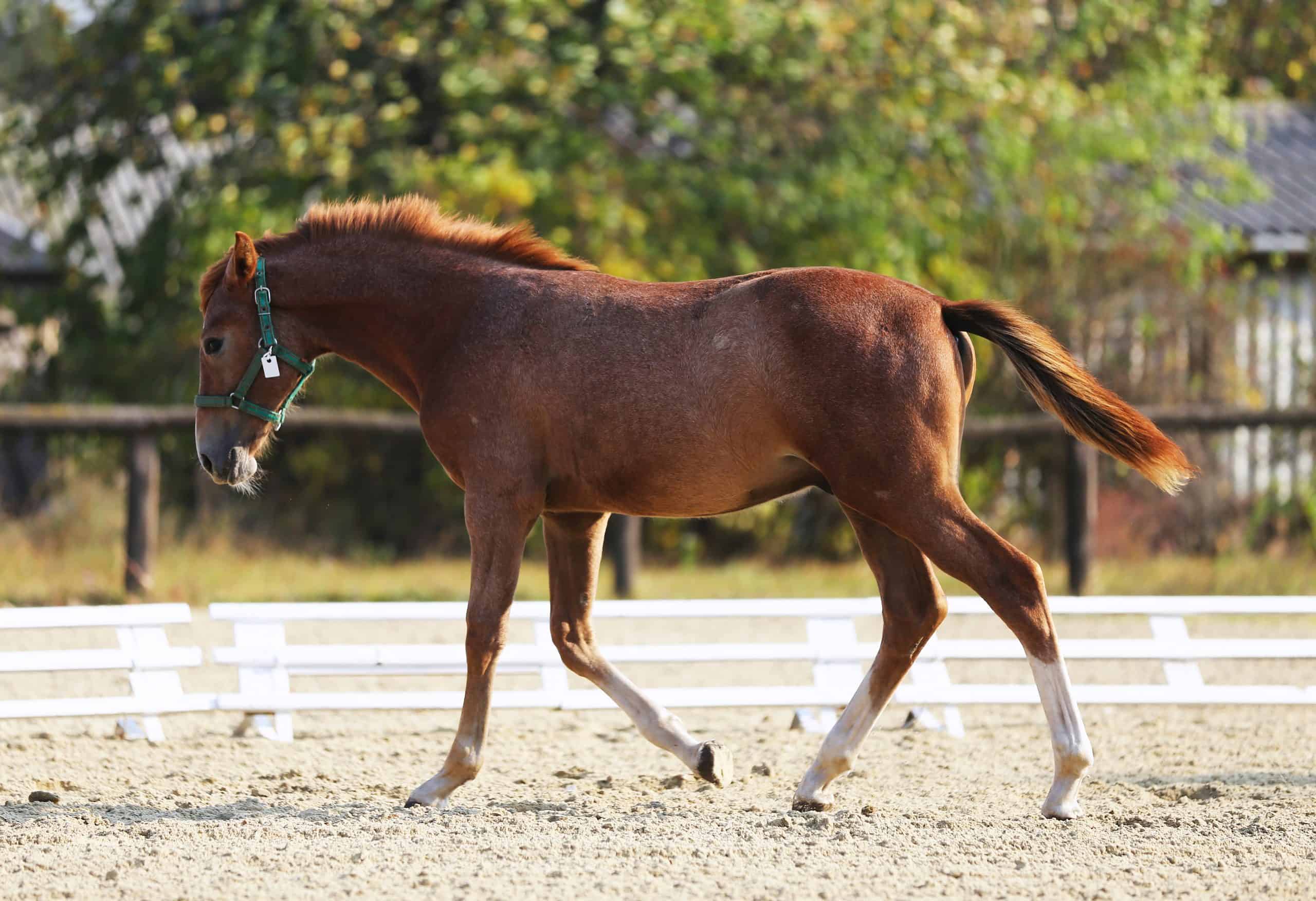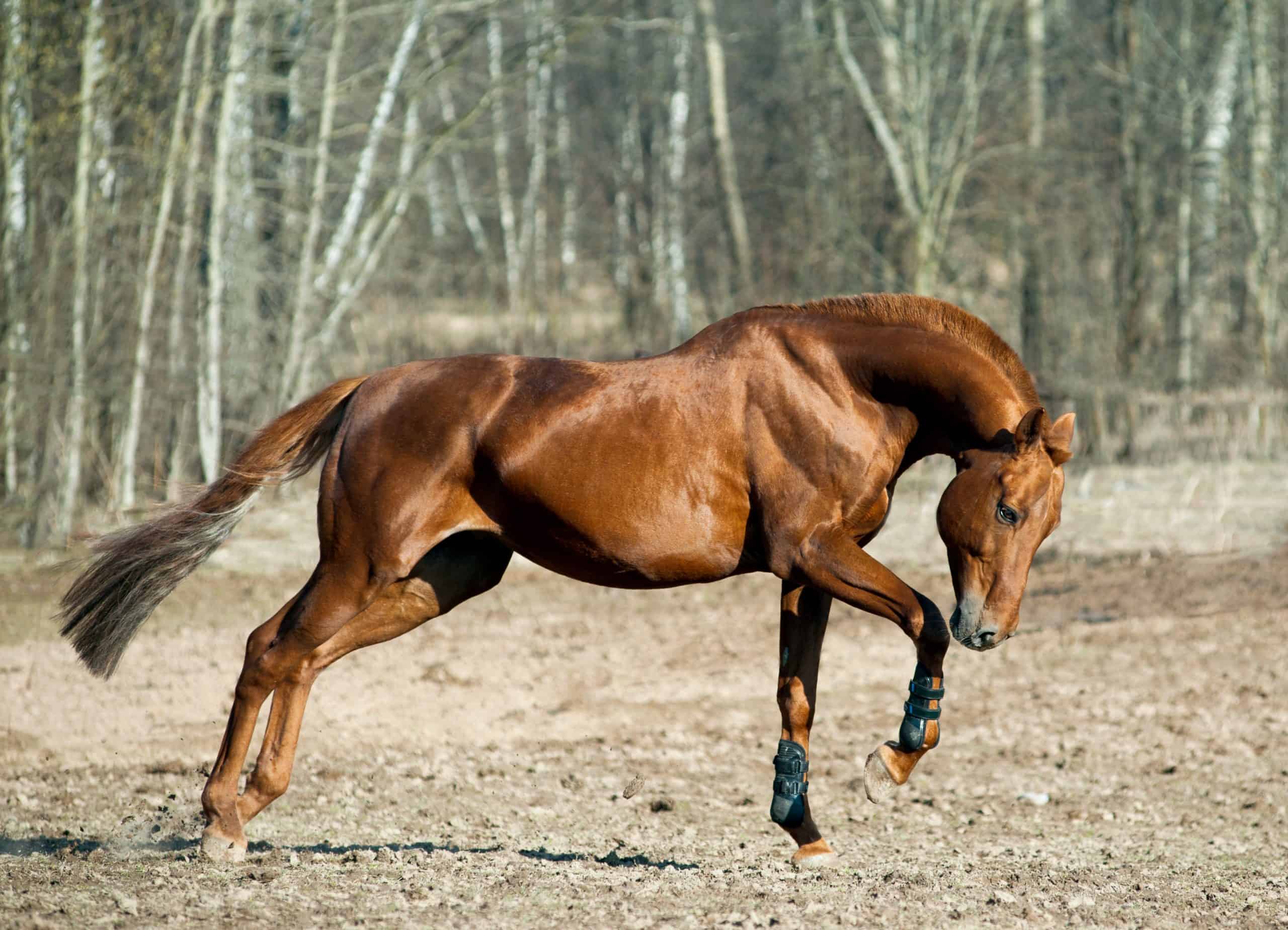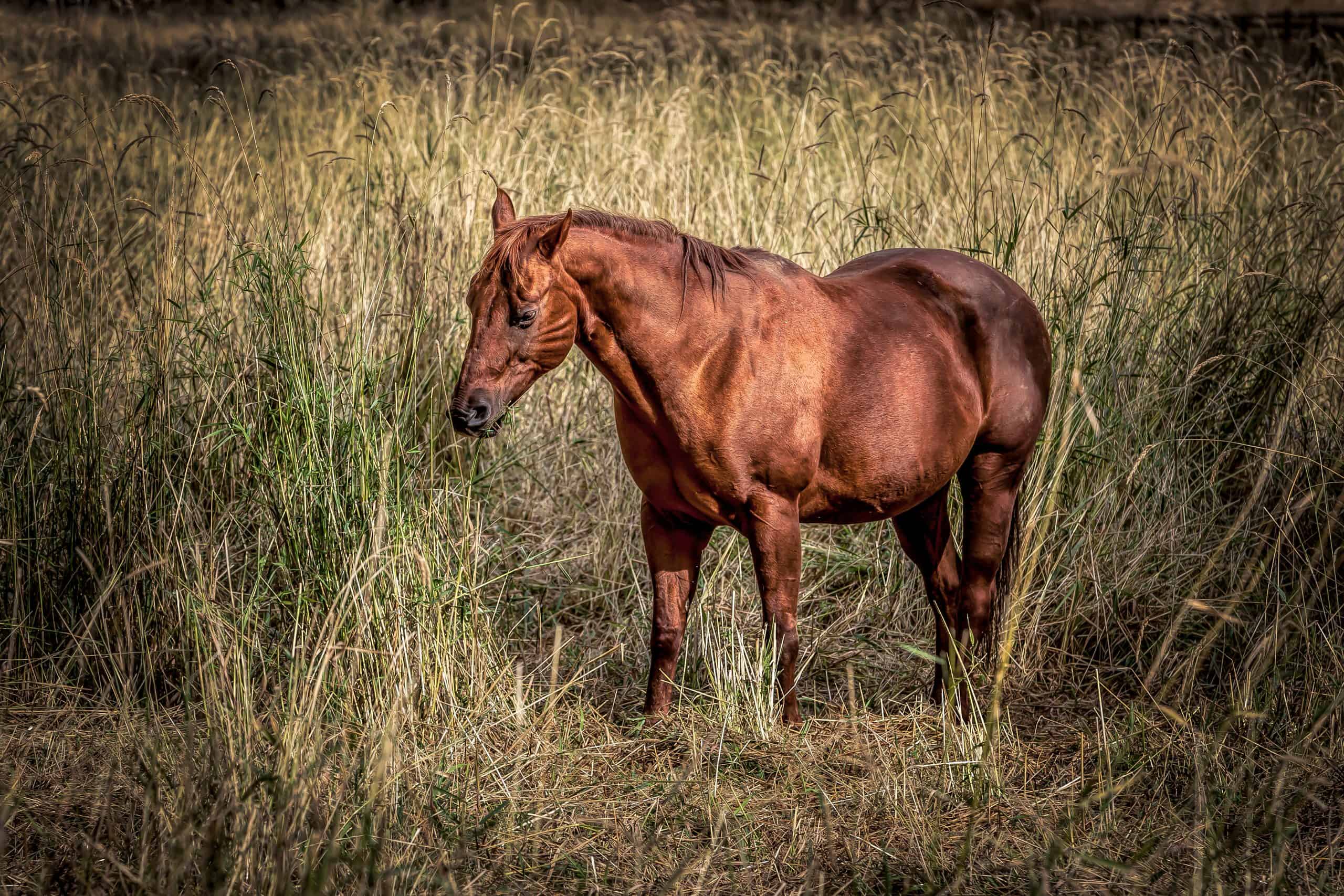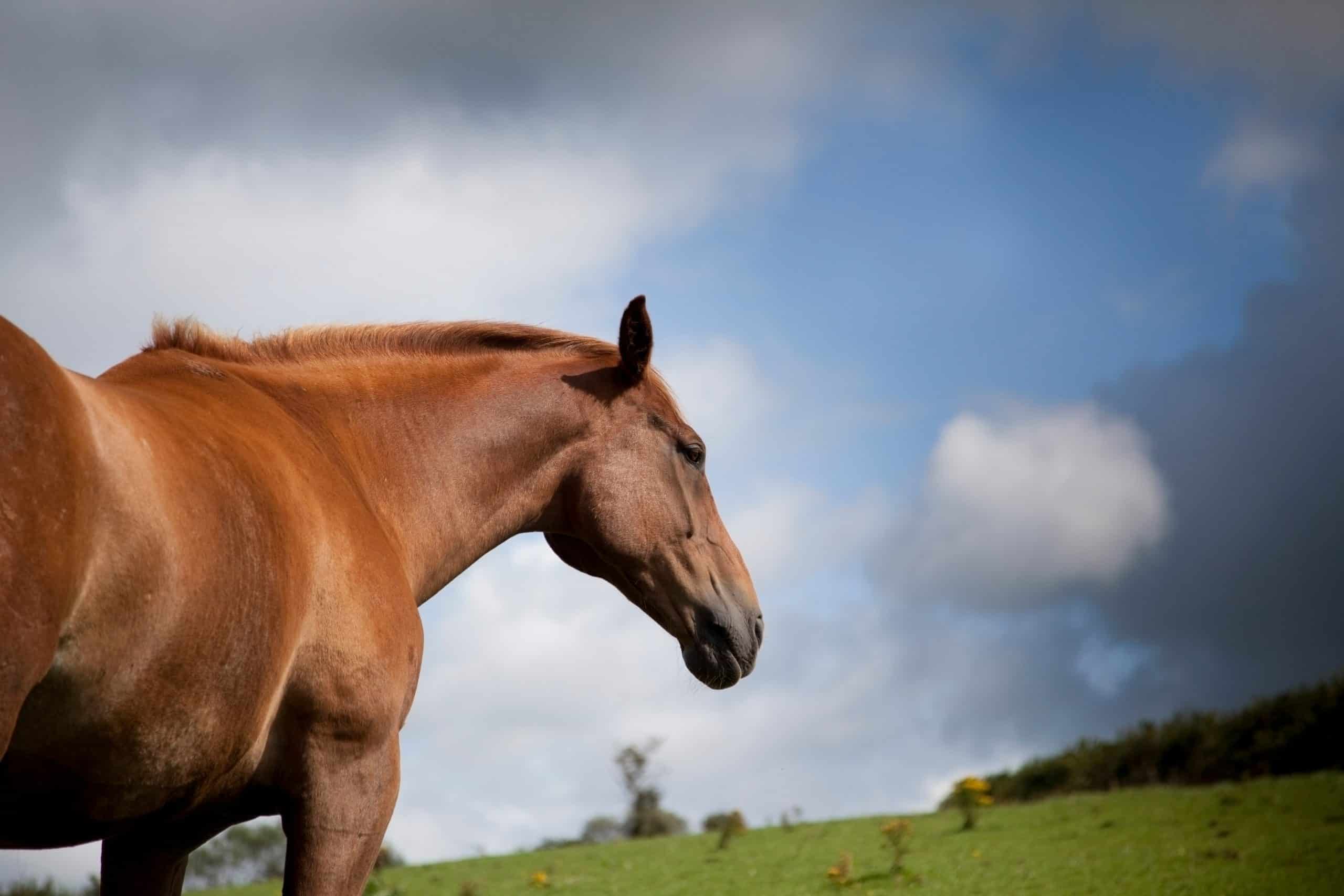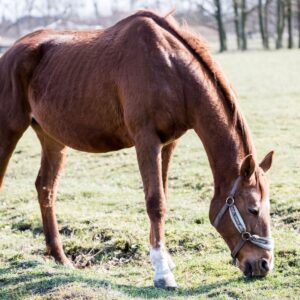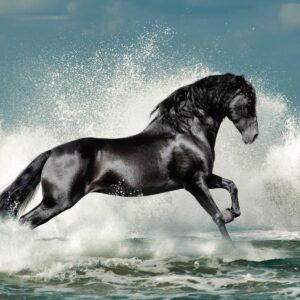What is a chestnut-colored horse? That is a million-dollar question that has been debated for years! Chestnut horses can be pale reddish to dark coffee color, and all reddish-brown shades in between. Most associations recognize the chestnut color, but they can't seem to agree on the same terminology for each shade of Chestnut.
The one thing breed associations can agree on is that a chestnut horse has a reddish-brown coat with no black points. Points refer to the mane, tail, legs, and eyes. If the horse has any black hairs at the points, they cannot be registered as a chestnut. There can be darker hairs around the eyes, but they cannot be black. The genetic make-up determines the color of a horse. For more information, check out this helpful website that explains the genetics of chestnut colors.
Wait, reddish-brown coat, isn't that a sorrel?
According to Equiworld, sorrel is a term that originated in the Western world, and Chestnut is an English term. They both refer to reddish-brown coats. There are multiple shades of reddish-brown coats found on horses. Each association has its standards based on genetic make-up and shade of color. The majority of associations refer to the lighter red as sorrel and the darker shades as Chestnut. You need to be aware of the association's standards and be able to register the horse under the correct color. If registration is not the goal, it is still nice to know the accurate color if you plan to sell, breed, or maybe brag to the neighbor.
According to Practical Horseman Magazine, there are four basic shades of Chestnut. These basic shades can come in a variation of tones:
- The Liver Chestnut horse has a chocolate brown body. The mane and tail are of the same color. There are two variations: the dark liver chestnut and the light liver chestnut.
- The Flaxen Chestnut has a reddish-brown body with a flaxen mane and tail. It is the only chestnut color where the mane and tail are a different color than the body. Flaxen refers to a crème shade.
- Light Chestnut is also called "sandy chestnut." The whole horse is a sand color.
- Red Chestnut can be red or shine like a copper penny. The mane and tail are the same color.
The color name depends on the breed association!
If you are lucky enough to own a gentle giant draft horse, most associations require a mealy effect. The mealy effect is a genetic modification. In order to determine if a horse has the mealy effect, look for lighter red or yellowish hairs on the flanks, behind the elbows, on the lower belly, and inside the legs. Additionally, there may be some lighter hairs on the muzzle or over the eyes. Multiple shades of red on the body can also be caused by the mealy effect. However, this can vary from each draft breed association.
The Belgian draft horse registry does not require a mealy effect. A sorrel Belgian can be light yellow with pale points. Additionally, Chestnut Belgian refers to darker shades of red.
A Suffolk draft horse is always Chestnut. There are seven variations of tone: liver, dark, red, copper, gold, yellow, and light.
The American Quarter Horse Association
The American Quarter Horse Association's most popular colors are Sorrel and Chestnut. The Chestnut horse is the darker reddish-browns. They can sometimes be so dark that they are confused with a seal brown. The points may appear black but are actually dark brown. A red factor genetic test is required in order to determine which is the dominant color. The association recognizes the flaxen chestnut color. Sometimes a flaxen chestnut can be confused with a chocolate Palomino.
The Canadian Horse Breeders Association
The Canadian Horse Breeders Association agrees with the other associations on one fact: there cannot be any black in the manes, tails, legs, or face of a chestnut horse. There are four different shades of chestnuts recognized by this registry.
- A Clear or Pale Chestnut is very similar to a Palomino, with a pale, even color. The difference is the mane and tail are usually reddish blonde, not crème like a Palomino's.
- A golden Chestnut can have any color on their points but black. The coat is a gold color with a reddish hue. They are darker than the Clear or Pale Chestnut.
- A Dark Chestnut has points that are darker than the coat. They are usually reddish-brown. The coat can range from pale copper to rich brown.
- A Burnt Chestnut has points that are dark reddish-brown to dark brown. The coat is the color of rich coffee to almost black.
Which horse breeds have chestnut coloring?
Chestnut coloring can be found in breeds with solid colors. Some breeds have Chestnut as a base color and white markings. Be sure to check with the particular breed association on the different terms used for different shades.
There is a magnitude of horse breeds recognized around the world. Here is a partial list of solid color breeds that recognize a chestnut color on some level. Most have different terms for different shades of Chestnut.
Some breeds that have solid colors are Arabian, Morgan, American Saddlebred, Dutch Warmblood, Hackney Horse, Hanoverian, Kentucky Mountain Horse, Missouri Foxtrotter, Paso Fino, Peruvian Paso, Racking Horse, Rocky Mountain Horse, Selle Francais, Shetland Pony, Tennessee Walking Horse, Thoroughbred, Trakehner, West Phalian, Welsh Pony, etc.
Breeds that have Chestnut as a base color, with white markings or patterns, are the American Paint Horse, Appaloosa, Icelandic, Pony of America, etc.
This article is the "tip of the iceberg" on association requirements for chestnut color requirements. It is essential to contact the breed registry to determine how they define the chestnut color.
Do you have a chestnut horse? Let us know in the comments below!
Additional sources: [1]
About the Author
Horse Courses by Elaine Heney
- Listening to the Horse - The Documentary by Elaine Heney & Grey Pony Films
- Shoulder In & Out Training for better balance, bend & topline development with your horse
- Over 110+ Polework Exercises & Challenges to Download
- Dancing at Liberty & Creating Connection with Your Horse (11 lessons) - Grey Pony Films
Wendy Sumner (Researcher/Writer)
Wendy grew up on a quarter horse ranch in Wyoming. She helped raise and train horses to be shown in the American Quarter Horse Association. At college, she received her Equine Science degree and pursued her love of everything equine. She has spent the last 35 years raising and training horses and teaching lessons. We are excited that she has agreed to join our team as a researcher and writer.

